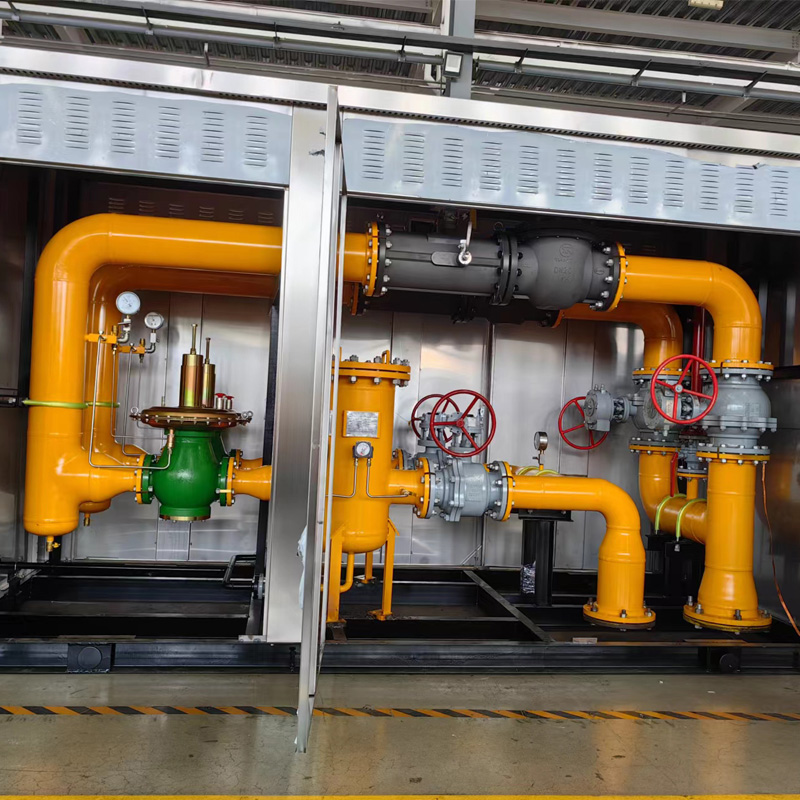
Nov . 25, 2024 17:59
Back to list
Understanding the Function and Importance of Pressure Reducing Valves in Systems
Understanding Pressure Reducing Valves Function, Importance, and Applications
Pressure reducing valves (PRVs) are critical components in various industrial and residential applications, designed to maintain a set outlet pressure regardless of fluctuations in the inlet pressure. This capability is essential for protecting downstream equipment, ensuring safety, and optimizing the performance of various systems. In this article, we delve into the function and importance of pressure reducing valves, as well as their applications across different industries.
Function of Pressure Reducing Valves
The primary function of a pressure reducing valve is to reduce a higher input pressure to a lower, more manageable output pressure. These valves automatically adjust the flow of fluid or gas based on the set pressure, which is achieved through a diaphragm or a piston mechanism. When the inlet pressure exceeds the predetermined threshold, the valve restricts flow to reduce the pressure downstream.
A typical pressure reducing valve consists of several key components the body, control spring, diaphragm, and a valve disc. The diaphragm moves in response to the pressure changes; when the downstream pressure drops below the set point, the diaphragm allows the valve to open, letting more fluid or gas through. Conversely, if the pressure exceeds the set point, the diaphragm pushes against the spring, closing the valve and reducing flow. This dynamic process ensures a consistent outlet pressure.
Importance of Pressure Reducing Valves
PRVs play a crucial role in maintaining system integrity and performance. One of the main reasons for using pressure reducing valves is to protect sensitive equipment downstream from damage. For instance, high-pressure spikes can cause pipes to rupture, lead to leaks, or damage gauges and other instruments. By regulating the pressure, PRVs help to prevent costly repairs and downtime.
Additionally, pressure reducing valves contribute to energy efficiency. By maintaining the desired pressure levels, they can help reduce energy consumption associated with pumping systems. For example, in water distribution systems, using a PRV allows for lower energy costs since the pumps do not need to work as hard to maintain flow at higher pressures. This can lead to significant savings over time.
pressure reducing valve

Furthermore, pressure reducing valves are essential in ensuring safety in various applications. In gas distribution systems, for instance, pressure fluctuations can lead to dangerous situations, including potential explosions. A PRV can mitigate these risks by maintaining stable pressure levels, enhancing overall safety.
Applications of Pressure Reducing Valves
Pressure reducing valves are utilized across a wide range of industries, including water supply, oil and gas, manufacturing, and HVAC systems. In municipal water supply systems, PRVs help manage the pressure in distribution lines, ensuring that customers receive water at a consistent and safe pressure while protecting the integrity of the pipes.
In the oil and gas sector, PRVs are crucial for controlling the pressure of gases transported through pipelines. They help maintain safe operating conditions, preventing overpressure scenarios that could lead to leaks or catastrophic failures.
Moreover, in heating, ventilation, and air conditioning (HVAC) systems, PRVs enable precise control over the pressure of water circulating through radiators or cooling systems. This control is vital for maintaining comfort levels in residential and commercial buildings.
In the manufacturing sector, PRVs ensure that pneumatic tools and equipment operate within specific pressure ranges, enhancing efficiency and product quality. By using PRVs, manufacturers can achieve consistent performance and reduce wear and tear on machinery, leading to longer service life and reduced maintenance costs.
Conclusion
Pressure reducing valves are indispensable components in modern engineering and maintenance, providing essential functions that protect equipment, ensure safety, and improve energy efficiency. Understanding their operation and applications is crucial for engineers, technicians, and homeowners alike. As industries continue to innovate and develop new technologies, the role of PRVs will only become more significant, highlighting the importance of these simple yet effective devices in ensuring efficient and safe operations across various sectors.
Next:
Latest news
-
Safety Valve Spring-Loaded Design Overpressure ProtectionNewsJul.25,2025
-
Precision Voltage Regulator AC5 Accuracy Grade PerformanceNewsJul.25,2025
-
Natural Gas Pressure Regulating Skid Industrial Pipeline ApplicationsNewsJul.25,2025
-
Natural Gas Filter Stainless Steel Mesh Element DesignNewsJul.25,2025
-
Gas Pressure Regulator Valve Direct-Acting Spring-Loaded DesignNewsJul.25,2025
-
Decompression Equipment Multi-Stage Heat Exchange System DesignNewsJul.25,2025

